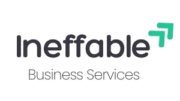In today’s digital advertising world, marketers have several tools and platforms to connect with their target audiences. Two of the most widely used ad types are native ads and normal ads (also called traditional or display ads). While both serve the same purpose—promoting a product or service—their approach, design, and impact on users are vastly different.
This blog will explore the core differences between native ads vs. normal ads, their pros and cons, and how to decide which one is best for your business.
What Are Native Ads?
Native advertising is a form of paid media where the ad matches the look, feel, and function of the content around it. These ads are designed to blend seamlessly with editorial content, making them less intrusive and more engaging for users.
Examples of Native Ads:
- Sponsored articles on news websites
- Recommended content at the end of blog posts
- Promoted listings on e-commerce platforms
- In-feed social media ads that appear like organic posts
What Are Normal Ads?
Normal ads refer to traditional display advertising formats that are clearly distinguishable from regular content. These include banner ads, sidebar ads, pop-ups, and interstitials. They are often more direct in their messaging but also more interruptive.
Examples of Normal Ads:
- Google Display Network banner ads
- YouTube pre-roll video ads
- Pop-up offers on websites
- Sidebar ads on blogs and news portals
Native Ads vs. Normal Ads: The Key Differences
Let’s compare native ads vs. normal ads across multiple factors:
| Feature | Native Ads | Normal Ads |
|---|---|---|
| Appearance | Blends with content | Clearly separate from content |
| User Experience | Non-disruptive | Often interruptive |
| Click-Through Rate | Higher (more engaging) | Lower (often ignored) |
| Ad Fatigue | Lower (looks like content) | Higher (users may get annoyed) |
| Trust Level | Higher (content-based) | Lower (sales-driven) |
| Platform Integration | Seamless | Static positioning |
| Cost | Slightly higher CPC/CPM | More affordable for impressions |
Advantages of Native Ads
1. Improved User Engagement
Since native ads appear as part of the regular content flow, users are more likely to read or interact with them.
2. Better Ad Performance
Studies show that native ads have a higher CTR (click-through rate) than normal display ads.
3. Less Ad Blindness
Native ads are designed to avoid banner blindness—a phenomenon where users ignore display ads.
4. Content-Oriented
Native ads provide value in the form of information, storytelling, or entertainment, rather than just selling.
Advantages of Normal Ads
1. Wider Reach
Platforms like Google Ads and Facebook Ads allow advertisers to target a massive audience quickly.
2. Easy Setup
Creating and launching display ads is straightforward and widely supported by ad networks.
3. Strong Visual Appeal
When done right, banners and pop-ups can be visually compelling and attention-grabbing.
4. Clear Call to Action
Normal ads can clearly display promotional offers, discounts, or buying instructions, making them direct and to the point.
Disadvantages of Native Ads
- May Be Perceived as Deceptive: If not labeled clearly, users may feel misled.
- Higher Content Creation Cost: You need to invest in copywriting, creatives, and research.
- Longer Conversion Cycle: Because native ads focus on content and awareness, conversions may take longer.
Disadvantages of Normal Ads
- Banner Blindness: Users often skip or ignore display ads entirely.
- Interruptive Experience: Pop-ups and overlays can annoy users and lead to higher bounce rates.
- Ad Blockers: Many browsers and users use tools that automatically block display ads.
When Should You Use Native Ads?
Native ads are ideal for:
- Content marketing campaigns
- Brand storytelling and awareness
- High-trust markets like health or finance
- Driving traffic to blog posts or articles
- Long-term customer relationship building
When Should You Use Normal Ads?
Normal ads are suitable for:
- Limited-time offers or discounts
- Product launches
- Quick conversions
- Large-scale remarketing campaigns
- Event promotions or lead generation
Performance Comparison: Native Ads vs. Normal Ads
Research shows:
- Native ads generate 53% more views than traditional display ads.
- Users look at native ads twice as often as display ads.
- Ad recall is 60% higher for native ads.
- Native ads have a higher ROI when promoting content or informative services.
However, normal ads may still outperform native ads in short-term direct sales or promotional campaigns, especially when budget is limited.
Best Platforms for Native Ads
- Outbrain – Recommended content across major news sites
- Taboola – Widely used for content promotion
- Revcontent – High-performance content distribution
- MGID – Affordable native ad network for small businesses
- Yahoo Gemini (now Verizon Media) – Native + display ad integration
- Facebook & Instagram – In-feed native-style ads
Best Platforms for Normal Ads
- Google Display Network
- Facebook Ads Manager
- YouTube Ads
- LinkedIn Ads
- Microsoft Ads
- Programmatic Ad Exchanges
Which One Should You Choose?
The answer depends on your business goals:
- Want to build long-term trust and educate your audience? Go for native ads.
- Need fast results, leads, or sales in a short time? Choose normal ads.
- For best results, use both together in a balanced digital marketing strategy.
Conclusion
Understanding the difference between native ads vs. normal ads is key to planning effective marketing campaigns. While native ads offer a subtle, value-driven way to connect with your audience, normal ads can provide the speed and visibility you need for quick wins.
By knowing the strengths and weaknesses of each, you can choose the right advertising approach that fits your goals, budget, and customer behavior. Whether you’re a content marketer or performance advertiser, blending both ad types can deliver the best of both worlds.
